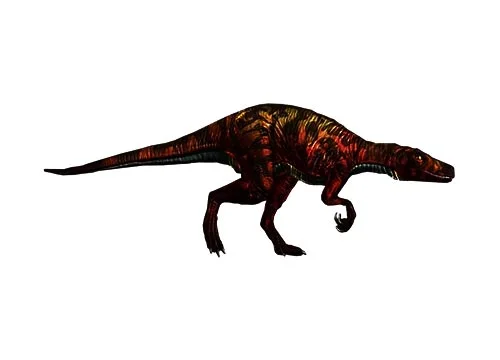Herrerasaurus (Herrera’s lizard)

Her-rare-rah-sore-us
Osvaldo Reig - 1963
Carnivore
Estimated 4 meters long
Small Theropod
H. ischigualastensis (type)
Argentina, San Juan Province - Ischigualasto Formation
Late Triassic, 231-228 million years ago
Herrerasaurus Facts
Herrerasaurus, meaning “Herrera’s lizard,” is a genus of theropod dinosaur that lived during the Late Triassic period, approximately 231 to 228 million years ago. It is known from fossils found in what is now Argentina.
Herrerasaurus was a relatively small, bipedal carnivore, measuring around 4 meters (13 feet) in length and weighing around 200 kilograms (440 pounds). It is one of the oldest known dinosaurs, and is considered an important transitional form between earlier reptiles and more derived dinosaurs.
Herrerasaurus had a long, slender body and a large head with sharp, serrated teeth that it used to capture and kill its prey. Its forelimbs were relatively long compared to other early theropods, and were likely used to grasp and hold onto prey.
Despite its relatively small size, Herrerasaurus was an important apex predator in Late Triassic ecosystems, and likely preyed on a variety of other animals, including early relatives of mammals and other reptiles.
The discovery of Herrerasaurus and other early dinosaurs has provided valuable insights into the evolution of these fascinating animals, and their relationships to other reptiles and to modern birds. While Herrerasaurus may not have been as well-known as some of the later dinosaurs, it remains an important and intriguing part of the history of life on Earth.



